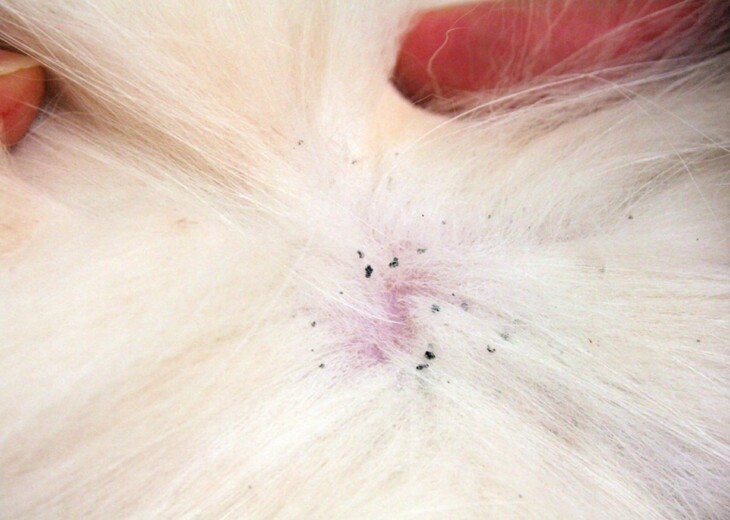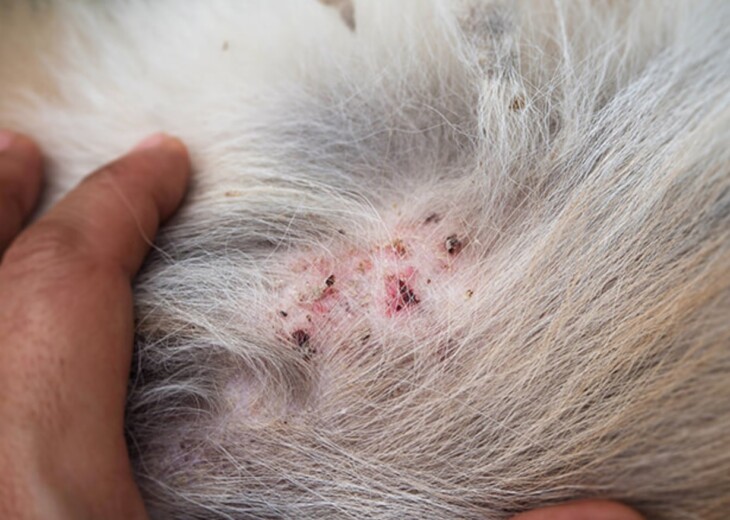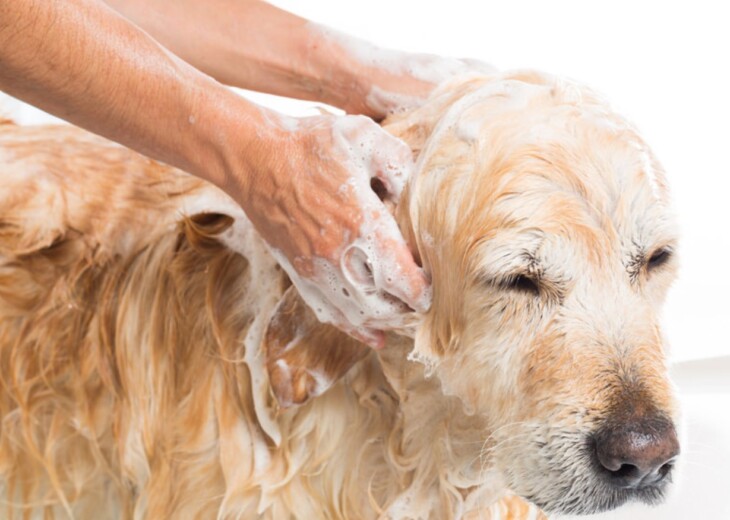Fleas are very small insects – however, they can turn to be a big issue for both dogs and their owners. Although this problem seems quite harmless, the situation is not like that. These insects are not only annoying to our pets – but also to humans. We must not forget the fact these insects no matter how small they are – are transmitters of many infectious diseases. Therefore, your pet must be flea-protected. But how do we even know that our dog has picked them up somewhere along the way? Look for these 5 basic signs by which you will recognize that your dog might have fleas.

Source: NBC News
Contents
Caution! The Flea Season Begins!
Fleas are annoying ectoparasites that usually attack dogs – but also cats or other mammals. Today, we know more than 2,000 species of these insects. They are wingless insects, which have an incredible ability to jump – even more than 1000 times their height. They feed on the blood of animals – so each of their bites is extremely annoying and irritates our pets. Today, we’ve all heard about dog fleas (Ctenocephalides canis) – but also cat fleas (Ctenocephalides felis). Whatever we call them – it doesn’t mean that dog fleas parasitize exclusively on dogs or the other way around. In fact, the well-known cause of a dog’s skin problems is connected to feline fleas. The biggest flea infestations are usually happening in the spring when the weather is warmer. However, our pets may also pick them up even in colder weather. In wintertime, houses and apartments are heated – so the environmental conditions are suitable for their reproduction.
5 Things That Can Indicate That Your Dog Has Issues With Fleas
These insects usually leave small red dots on the dog’s skin. The mildest symptoms in dogs infested with fleas are pronounced itching and nervousness. But that’s not all. So how do we know our dog has fleas? Here are 5 signs you should pay attention to.

Source: ZUKi Pet
1. Intense itching and licking of the skin
The bite itself causes very intense itching. This causes a reaction in the dog who starts scratching, licking – and biting the skin around the particular area. Very often this behavior can be an indicator of some other phenomena or diseases in dogs – but the flea is certainly a No.1. suspect.
2. Crusts or redness
Redness sometimes occurs due to the flea bite itself or a dog’s allergic reaction to flea saliva – when the redness is a bit more intense. On the other hand, crusts are just a consequence of dog scratching and biting the area around the flea bite – when small wounds can often form, which are a suitable ground for the development of further infections.

Source: This Dogs Life
3. Irritated skin
Irritated skin does not have to manifest itself only through redness. On the contrary, it can lead to additional drying and flaking of the skin, where dryness leads to additional scratching. The dog is intensively scratching, and after a while, micro holes appear on the skin – which can be a good base for the spread of other infections.
4. Black spots on the skin
When you notice this, know that the fleas on your dog have already done the job. You already know what we mean. So, fleas have reproduced, and black spots are nothing but flea eggs that will hatch – on your dog or fall everywhere around during scratching. This way, fleas can be very quickly spreading all over the house – and then your job is far more difficult than you think.

Source: Frontline
5. Allergic dermatitis as an allergic reaction to flea saliva
Fleas are the world’s number one cause of allergic dermatitis in dogs and cats. During the bite, the flea’s saliva contains high-molecular protein, which is responsible for allergic manifestations. According to superdog.net, it is always recommendable to use special dog shampoos and cosmetics intended for hypoallergenic dog skin. Symptoms of dermatitis caused by flea saliva allergy include scratching, chewing, licking, skin inflammation, and hair loss. In severe cases, skin damage called a hotspot can occur, or a granuloma can form – an elevated, edematous lesion that can leave a permanent scar.
Be Careful With Treatments Against Fleas
In the past, methods of removing fleas from pets – have been bathing and immersing animals in pyrethrin-containing insecticide solutions. Although very effective, pyrethrin is absorbed into the bloodstream through the skin – and can be toxic to the liver and nervous system. Because animals with dermatoses can have damaged and inflamed skin – they can absorb a larger amount than healthy pets. Permethrin, a stronger synthetic insecticide, is especially dangerous for cats. Products containing permethrin are labeled: “for use in dogs only.” Newer preparations for local treatment of fleas are much safer – and act faster. Your veterinarian will prescribe the safest and most effective preparation.

Source: Gallant
What Can You Do?
Prevention is definitely the best solution, so bathe your dog with products, shampoos, and balms that are intended for that purpose. Also, you can use flea repellent collars. All those who are opposed to chemicals – can also buy collars that are made exclusively from natural herbal ingredients. Also, brush your pet regularly and control any possible changes or damages on the skin.
The Bottom Line
Regular care will not prevent the appearance of fleas on your dog, but it will at least warn you of any symptoms so that you can start treating your dog as soon as possible. Every couple of days, check and clean your pet’s bed, and also clean, vacuum, and ventilate the rooms every two days. When you have finished vacuuming, throw away the vacuum cleaner bag, because fleas can multiply inside the bag as well. Be sure to treat the area with some of the detergents by leaving it to act for a while and then vacuuming it and wiping the floor with a damp cloth. Repeat the procedure as often as possible to destroy all flea eggs that can be found hidden in cracks, carpets, blankets, etc.
